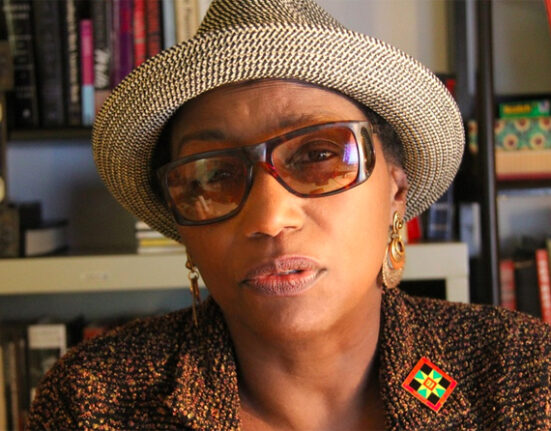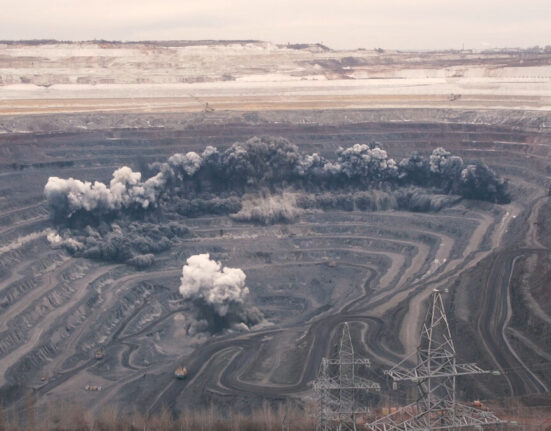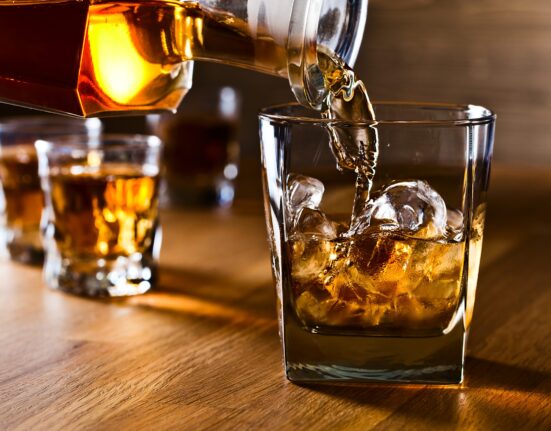Women – and women artists – as you’ve never seen them before.
Modern Women: Flight of Time opened last week. It includes the household names (Rita Angus, Frances Hodgkins, A. Lois White), but how many people could correctly identify a painting by Pauline Yearbury, Teuane Tibbo or Flora Scales?
They were, respectively, one of the first Māori graduates of Elam School of Fine Arts, a self-taught Samoan painter “discovered” by Auckland’s art scene in the 1960, and a New Zealand-born woman who was travelling on a British passport in 1940 when she was arrested in France, imprisoned for two years and lost most of her paintings to Nazi plunderers.
Male modernist painter Toss Woollaston was once asked how Flora Scales had influenced him: “Profoundly and instantly and constructively,” he replied.
So why is he more famous than she? Why is the highest recorded auction hammer price for a Woollaston $310,000 – and the equivalent for a Scales just $16,000?
Watch this space, say the experts. Public art institutions are actively back-buying to fill the female-shaped holes in their collections. On the gallery floor, there are more exhibitions focusing on underrepresented female artists. And, in the secondary auction market, prices for their work are on the up.
Just one example, reported by Webb’s head of art Tasha Jenkins: “Singing Girls by Adele Younghusband, which we sold at auction in 2000 for $19,800, then again in 2016 for $52,875, and then brought to market again last year, when it achieved $159,153.” Adjust those figures for inflation and that’s a 334% increase in just over two decades.
Younghusband is among the 40 artists represented in Auckland Art Gallery’s Modern Women show. It features more than 80 paintings, prints, sculptures and textiles, displayed across three rooms titled “stage”, “mask” and “setting”. Curator Julia Waites says as she worked on the exhibition (drawn from major public collections and bequests), “dramatic and theatrical” themes emerged.
“And I was like, ‘This feels very new’. Because my understanding of New Zealand art history is that it’s very landscape-based and very much about tracing how New Zealand artists followed international movements. How and when did we get on to cubism? When did we become interested in abstract art? Which is such a fundamental theme within the history of modern art – but it’s not the only thing.”
Waite says the focus on women’s art made between 1920 to 1970 “feels quite uncharted”.
Unexpected surprises?
“The tremendous strength of the work and the question of, ‘Why hasn’t this been seen more? Why isn’t this included?’ Look at a figure like Ivy Fife, a Canterbury painter. From Ōtautahi, born there, spent a career there, worked at the university – why isn’t she as well-known as Bill Sutton?”
Similar conversations are happening in galleries around the world.
Australia’s National Gallery initiative Know My Name was launched off the back of an acknowledgment that only 25% of its collection was by women artists. Projects have included a takeover of 3000 billboards across the country and a Wikipedia edit-a-thon that added 80,000 words on Australian women artists to the online resource. Tate Britain has just opened Now You See Us, a major new exhibition focusing on women artists working between 1520 and 1920. In New Zealand, women’s art has, arguably, never been more visible – or sought-after.
While just 15% of the national collection (held by Te Papa) is by women artists, the institution is in active catch-up mode. Figures supplied to the New Zealand Herald this week reveal that of the 416 art works (not including photography) newly acquired over the past five years, 53.4% were by women.
Meanwhile, of the 58 exhibitions shown at Te Papa’s Toi Art over the same 2018-2023 period, 74% included work by women and 42.5% focused solely on women (compared to just 25.5% that focused solely on men).
Female artists identified as “underrepresented” in the national collection include Pauline Yearbury, Anne Hamblett, Tanya Ashken, Marilyn Webb, Jacqeuline Fahey, Elena Gee and Teuane Tibbo – five of whom have work in the Auckland Art Gallery’s Modern Women show.
It reports a similar gender imbalance. Founded in 1887 with 59 artworks – and just one of those by a woman (Through the meadows by Edith Findlay) – today, the Auckland Art Gallery collection contains 18,147 items, with 15% credited to female artists.
Gallery director Kirsten Lacy said the institution did not have specific acquisition policies relating to gender, but “it does seek to address gaps in its collection”.
Between 1900-1950, the gallery acquired 185 works by women (7.98% of total growth). Over the next half-century, it added 1332 more (13.38% of acquisitions). Over the last five years, around 37% of new art added to the collection has been made by women. In the current year to date, male artists are in the minority – only 48% of new acquisitions are by men.
“Addressing the extensive historical imbalances of women’s representation in the collection is an ongoing task,” says Lacy.
Monday lunchtime, and a steady stream of visitors make their way to the gallery’s second floor, where the Modern Women exhibition will show until February next year. Two older women make their way slowly from work to work.
“I’ll tell you something about this blouse,” says one to the other. “It was an apron first …”
The women have stopped in front of Rita Angus’ 1942 Portrait of Betty Curnow. The model wears a cotton shirt printed with sombreros and cacti. Later, Curnow will recycle the shirt into a two-piece bikini and, later still, eight fabric fragments will be added to the country’s archives. Would those fragments mean anything without this iconic painting? In 2006, Cass, an equally famous Angus painting, was named the country’s favourite artwork. The artist’s status is reflected in her prices – Angus’ painting Storm, Hawkes Bay, sold at Auckland’s Art + Object in 2018, currently holds the record for the highest price achieved for a female artist at auction in New Zealand.
And yet: Australian Art Sales Digest records the highest price ever paid for an artwork at auction in New Zealand was $2.39 million (for a Colin McCahon acrylic on canvas sold by Webb’s in 2022). Scroll through the top 10 (more by McCahon, four by Charles Frederick Goldie and one each by Michael Parekowhai, Bill Hammond and Tony Fomison) and they are all $1m-plus sales. The $681,500 paid for the Angus landscape doesn’t even come close.
“In all honesty, I think there’s probably an element of sexism to the modernist project,” says Art + Object’s Ben Plumbly. “The phenomenal rise in the New Zealand art market in the early 21st century has occurred on the back of old white guys.”
More recently, he says, buyers have turned their attention to 20th-century female and Māori artists.
“The whole modernist project was the drive for originality, the quest to be avant garde, to be on the leading edge and create something that’s new and totally original. And the idea that was the preserve of male painters is largely being shown to be flawed.
“Gretchen Albrecht is a case in point. You have these beautiful abstract paintings that are uniquely married to our local environment and, in particular, the beautiful west coast of Auckland, in a way that is without precedent. And when they come to market, and they’re good examples in good condition, they are starting to fetch the prices that we would expect from a Milan Mrkusich from the same period.
“The idea that Gretchen Albrecht could have sold a painting for a six-figure equivalent in the 1970s would have been beyond comprehension …”
Need more convincing? In 2016, when the New Zealand Herald’s Canvas magazine ran a cover story on the artist, this was the headline: “She’s been a top NZ artist for 60 years… why you may not have heard of Gretchen Albrecht”.
“I think that the revaluation of the market for women’s art is only beginning,” says Plumbly. “There is so much scope for price increases to bring them into line with their male counterparts.”
Volume is an issue. The biographical essays in the book of the Modern Women exhibition reveal common threads – domesticity and, in some cases, early deaths stymied the output of many female artists.
“There’s often a paucity of material,” says Plumbly. “If you look at someone like Anne Hamblett, who was married to Colin McCahon, or another painter like Flora Scales, I’m sure we would see a really strong rise in the market for their works, but they are just so rare. It’s impossible to build a market off the back of them.”
Should buyers invest in art by women?
“I’m terrible with ‘art investment’,” says Plumbly. “I just think they are two words that don’t belong together. But, yes, it’s safe to say that all of a sudden people are seeing better value in women artist’s works, and seeing that they have hitherto been underappreciated and undervalued.”
Auction houses deal in the secondary market – artists don’t directly benefit from increased prices (though that’s set to change on December 1, when the country’s new resale royalty scheme comes into effect) – and catalogues are less likely to contain the contemporary art being made right now by living artists.
Plumbly says women are, unquestionably, producing some of the country’s most interesting contemporary art – witness the Mataaho collective’s Golden Lion at the 60th Venice Biennale, or the likes of Emma McIntyre, represented by David Zwirner (named last year one of the world’s four most powerful commercial galleries).
“We’re inside a transition, where the New Zealand secondary market that was dominated by those five or six male figures is shifting to a more international outlook; being part of a global conversation, rather than a national discourse. And I think there are a lot of interesting women artists at the heart of that.”
Tasha Jenkins, head of art at Webb’s auction house, says many 20th-century New Zealand artists were overlooked in favour of white male peers.
“At this time, women’s art was often seen more as a hobby and not a career. They may have been expected to look after the home and children, meaning they likely didn’t publicise their work in the same way or have the same exhibition opportunities as men. This would have been even more so for Māori or Pasifika women.”
Jenkins says these women are now being “rediscovered”; previously undervalued artists like Teuane Tibbo, A Lois White, Robyn Kahukiwa, Robin White and Adele Younghusband “are now achieving excellent results”.
Recently observed wide margins between top estimates and eventual sales prices supports this thesis. Jenkins reports Robin White’s Glenda at Tahakopa, for example, made $416,000 against its top estimate of $350,000, Younghusband’s Spring Cleaning went for almost four times its expected high of $60,000 and A. Lois White’s Design, catalogued at between $40,000-$60,000, sold for $232,608.
At Auckland’s International Art Centre, significant record highs have been set A. Lois White ($288,300 last year) and Gretchen Albrecht ($193,875 in 2022). Back in May, it fully tested buyer appetite for work by women artists with an auction dedicated to the theme.
Director Richard Thomson admits when two staffers approached him with plans for a women only auction, he was dubious.
“My initial thought was, ‘Well, that’s great, but how are we going to get those works without affecting the rest of the business?’ But, as it turned out, it was a very, very good move.”
The auction almost tripled previous sale prices for Pauline Yearbury and set new auction record highs for her, Marti Friedlander ($24,025) and Star Gossage ($48,050). Thomson says more than 70% of works were sold on the night and, overall, the auction made 2% more than the estimated overall value of the sale. That might not sound like much, he says, but by comparison, a recent “Important & Rare” sale was 34% under the total reserve value.
Thomson is also reluctant to use the “investment” word, but says it’s a fact that previously underrated artists are finally being noticed.
“People like Pauline [Yearbury], or Jacqueline Fahey. I can think of a time when that would be just another lot. Now, we would feature a Fahey.”
Fahey is just one of four still-living artists featured in Modern Women. The work Woman at the Sink, painted in 1959, is on loan from a private collection in Sydney and comes from the Auckland artist’s Suburban Neurosis series. According to the caption next to the painting, it was a feminist statement to her socialist friends.
Fahey writes: “They felt I should be painting the worker, who was of course a man – a man working in a factory or the road. The worker most obvious to me was the unpaid, unrecognised worker, the house worker.”
Top Five Women Artist NZ Auction Sales (source: Australian Art Sales Digest)
- Rita Angus – $681,500 (Storm, Hawke’s Bay sold in 2018 by Art + Object)
- Frances Mary Hodgkins – $451,000 (Still Life with Landscape sold in 2003 by Webb’s)
- Rita Angus – $421,000 (A Woman Sketching Ad, 1965, sold in 2018 by Dunbar Sloane)
- Robin White – $406,300 (Glenda at Tahakopa, 1978, sold by Webb’s in 2022)
- Frances Mary Hodgkins – $368,000 (Monastery Steps, 1934-35, sold by International Art Centre in 2015)
Modern Women: Flight of Time is free to view at Auckland Art Gallery Toi o Tāmaki until February 23, 2025.
Kim Knight is a senior journalist with the New Zealand Herald’s premium lifestyle team who has won multiple media awards for her arts, entertainment and lifestyle reportage.





